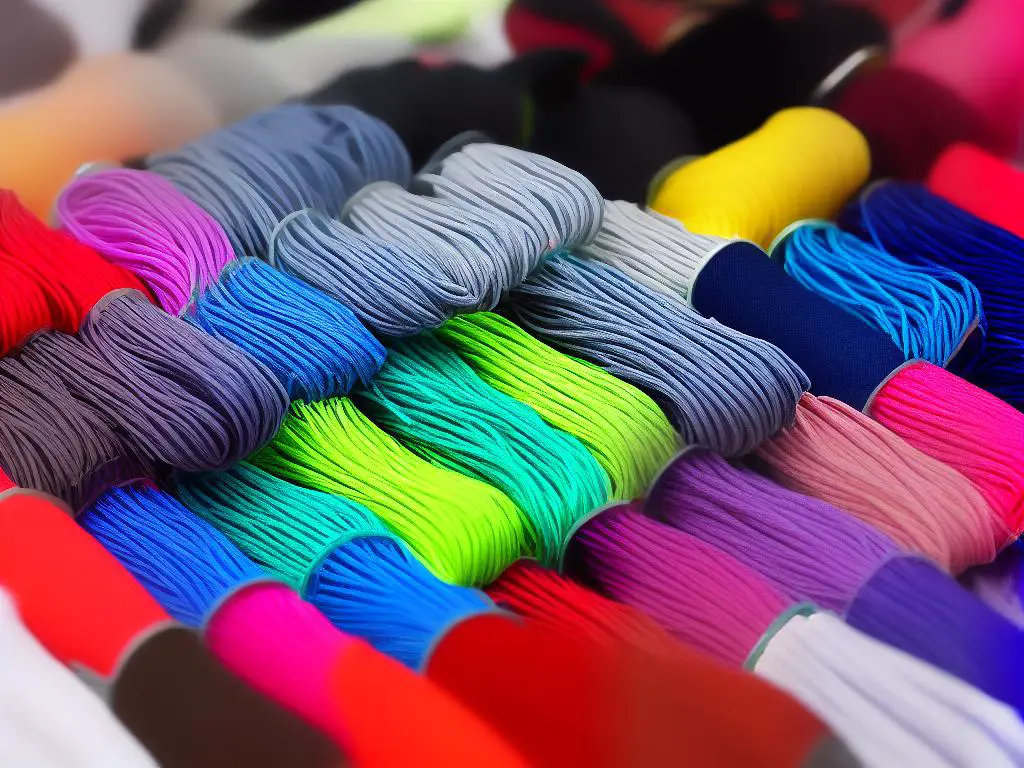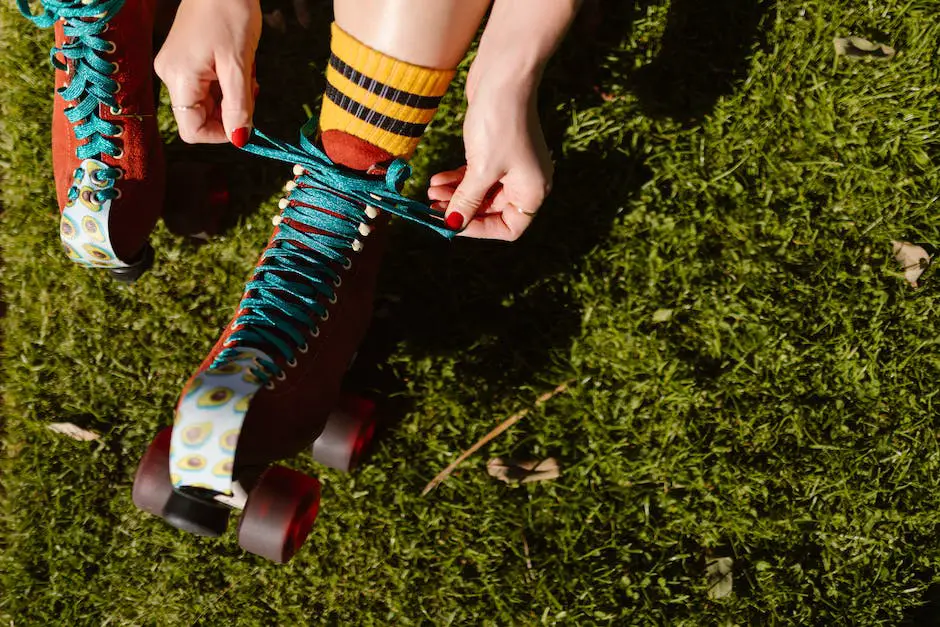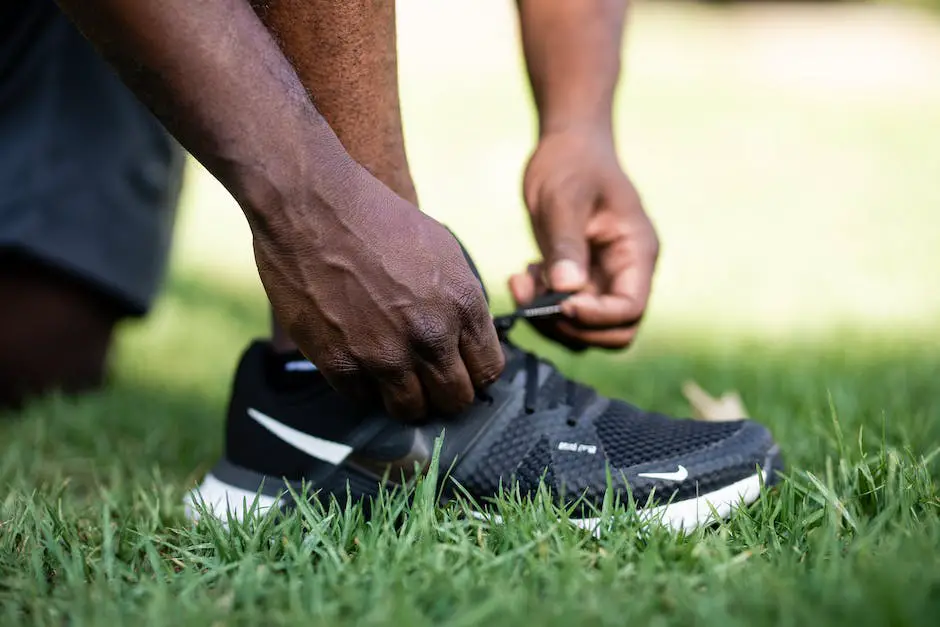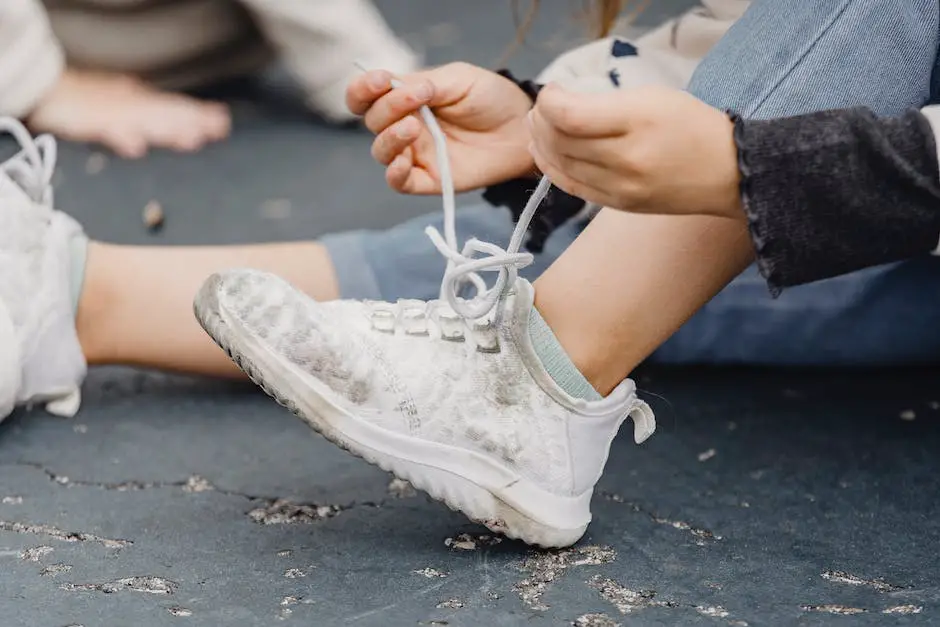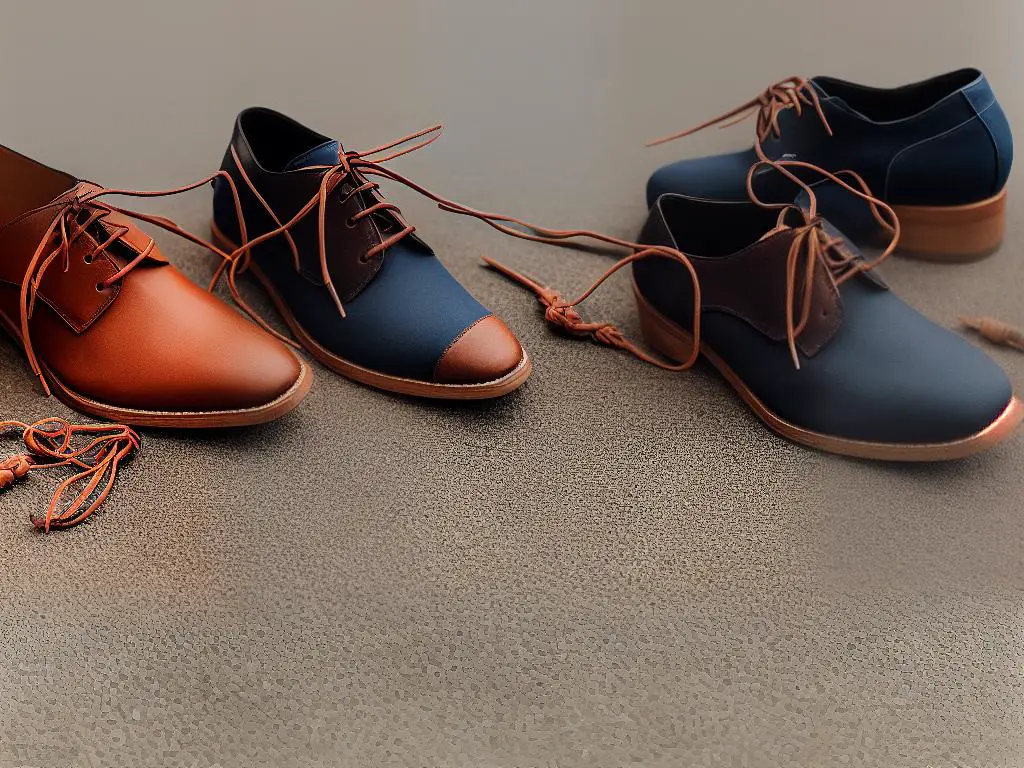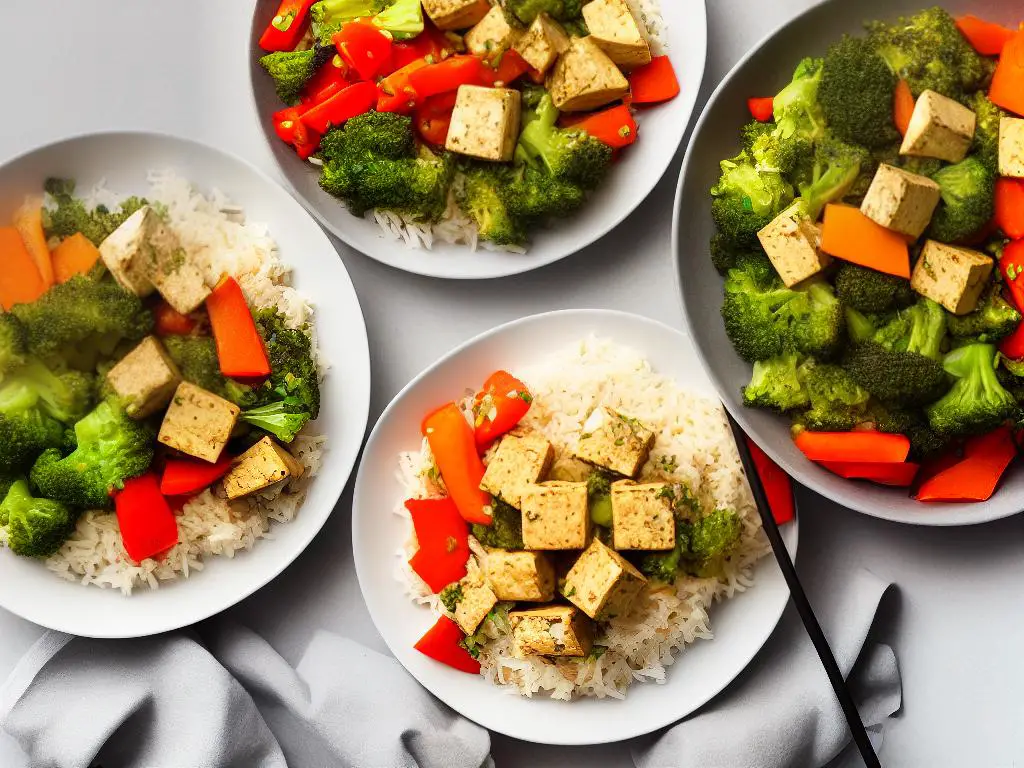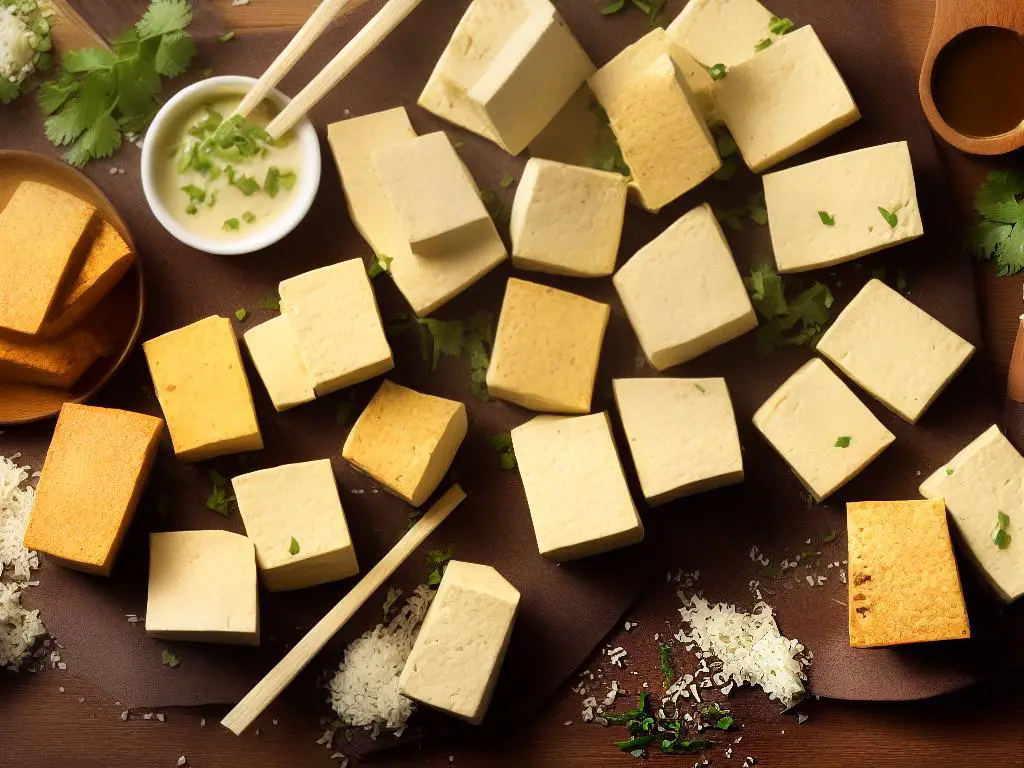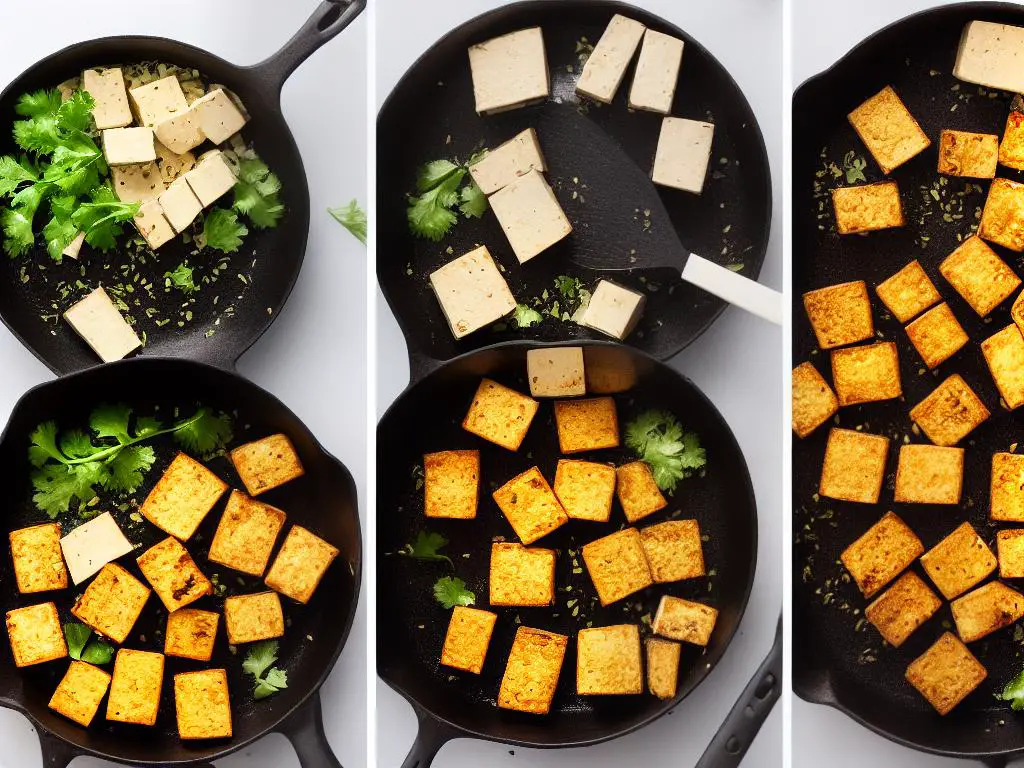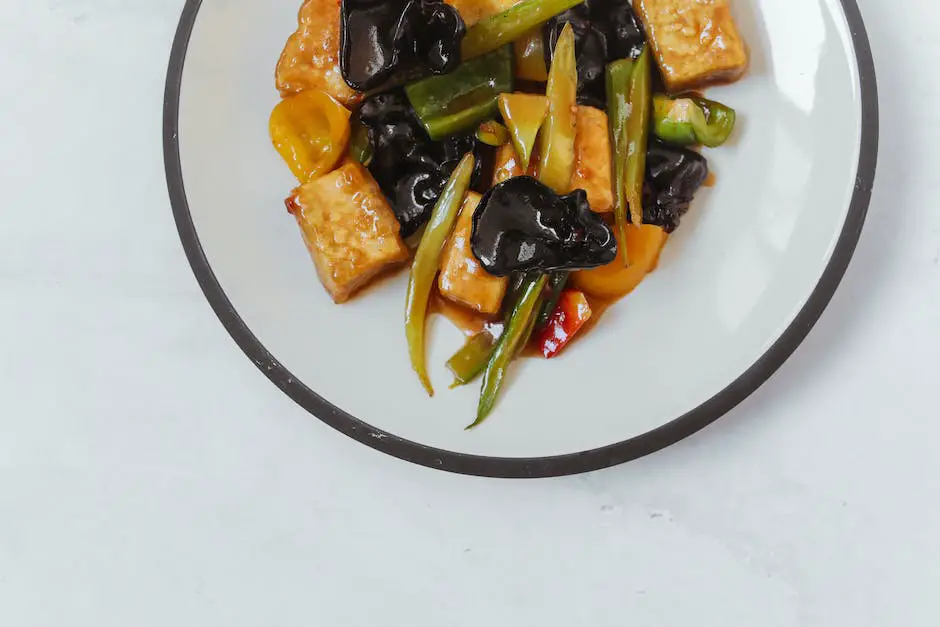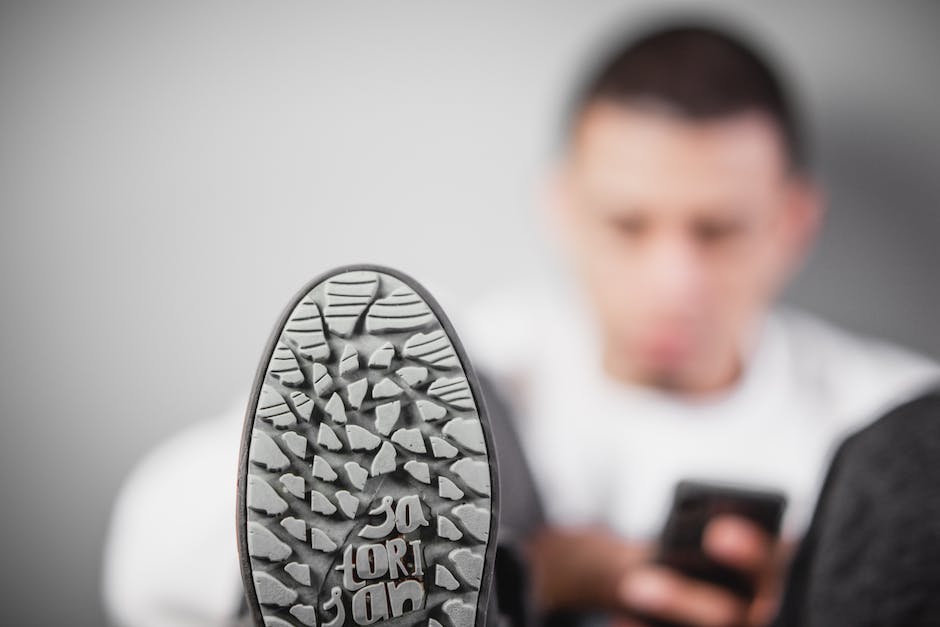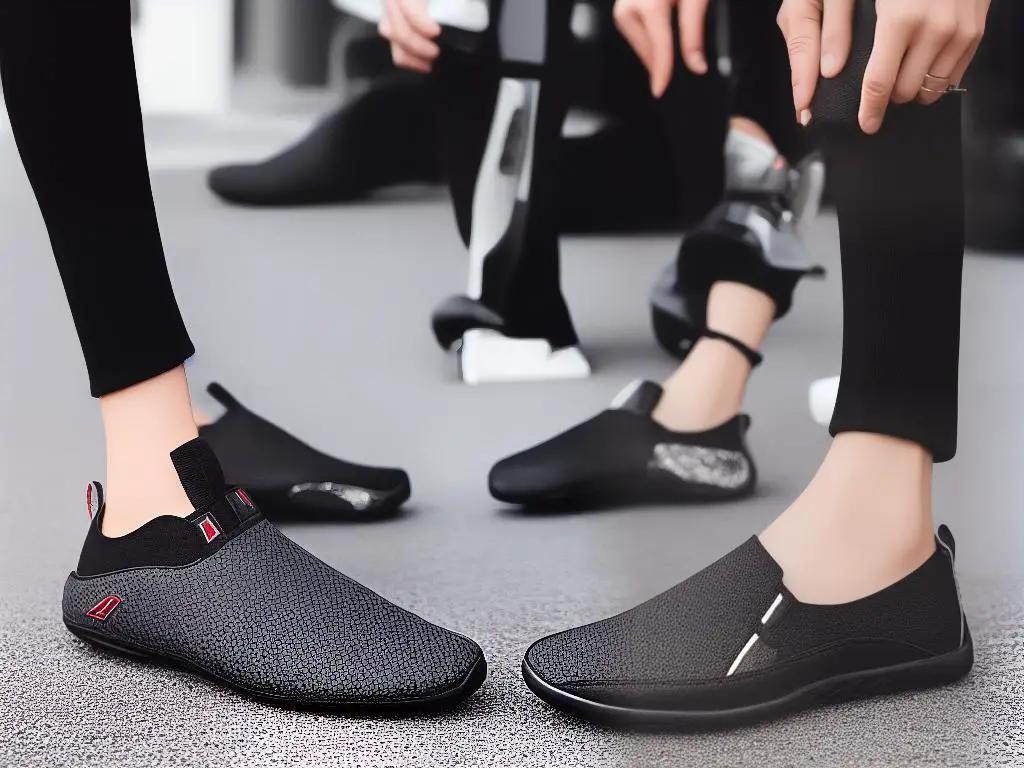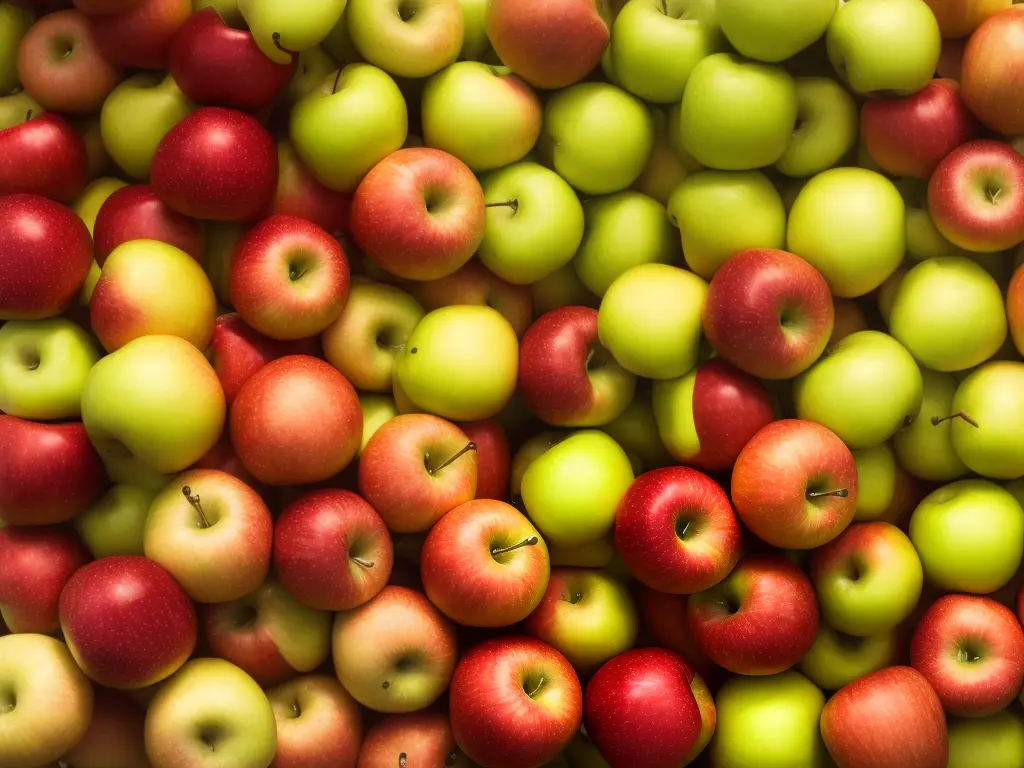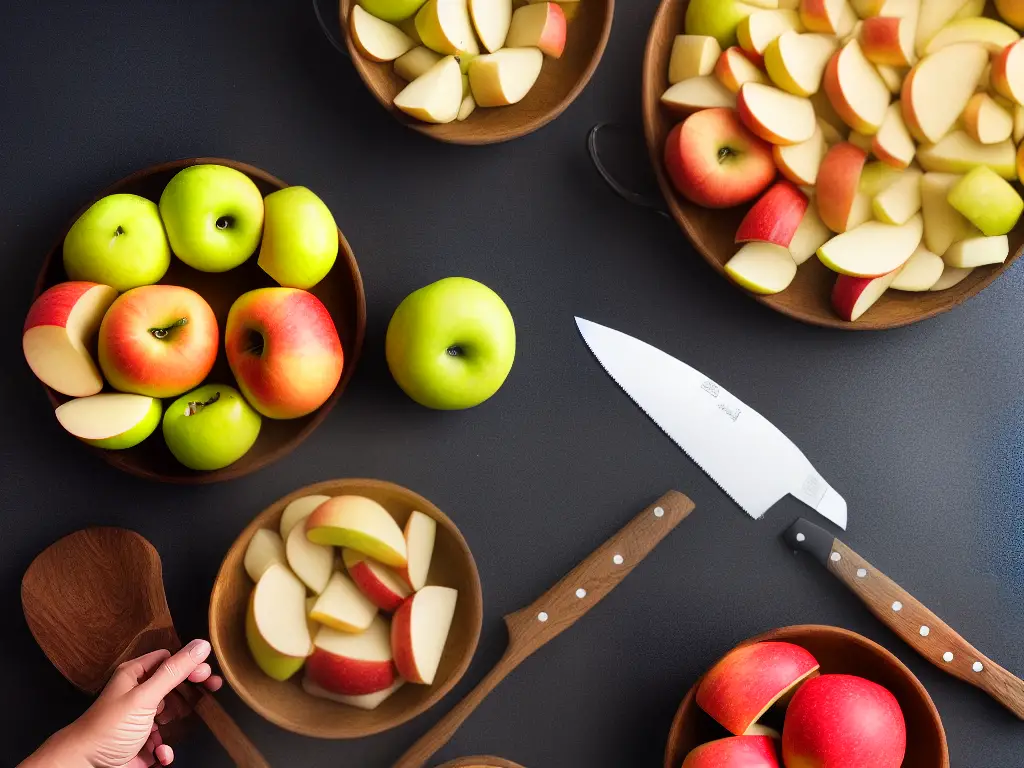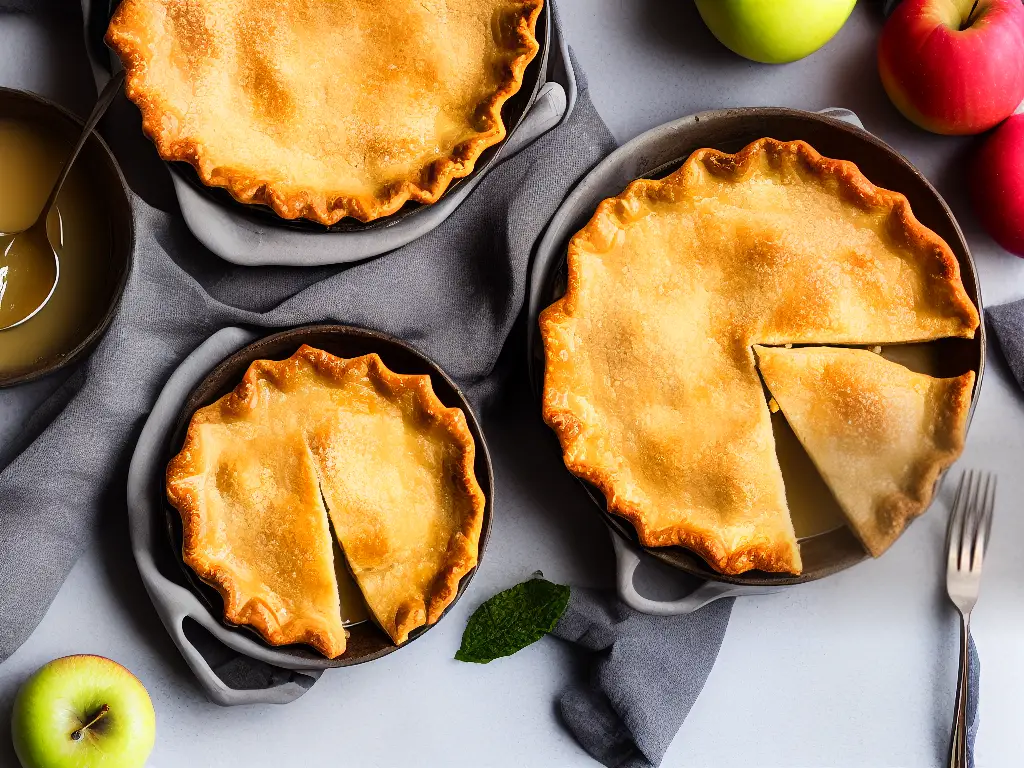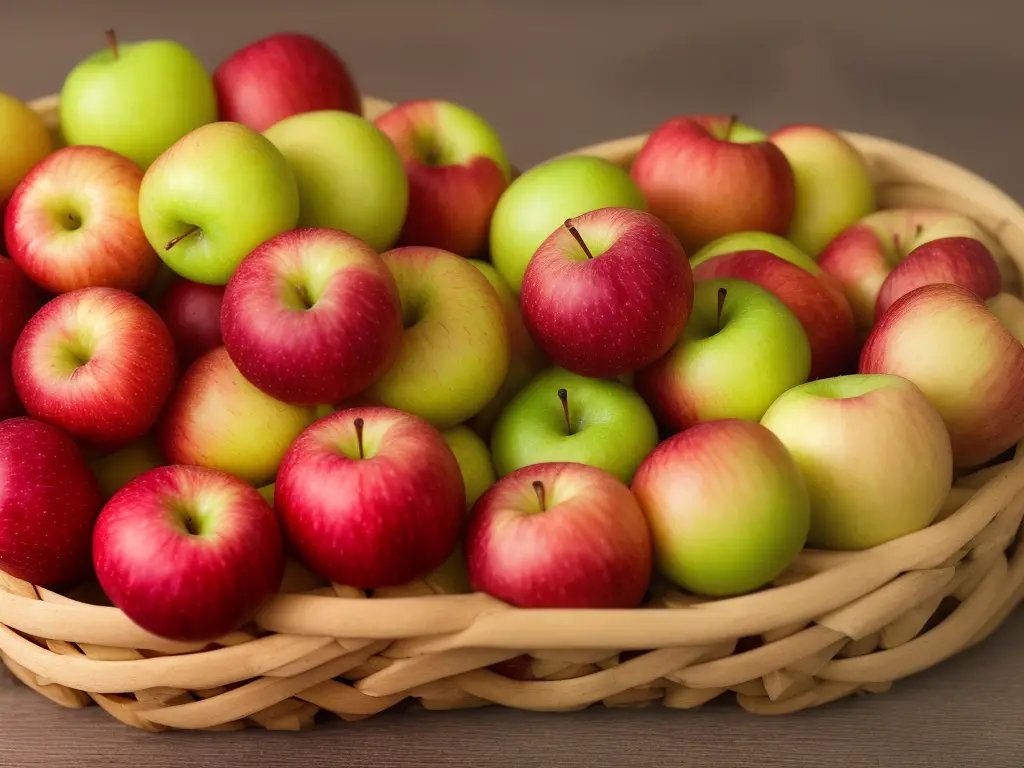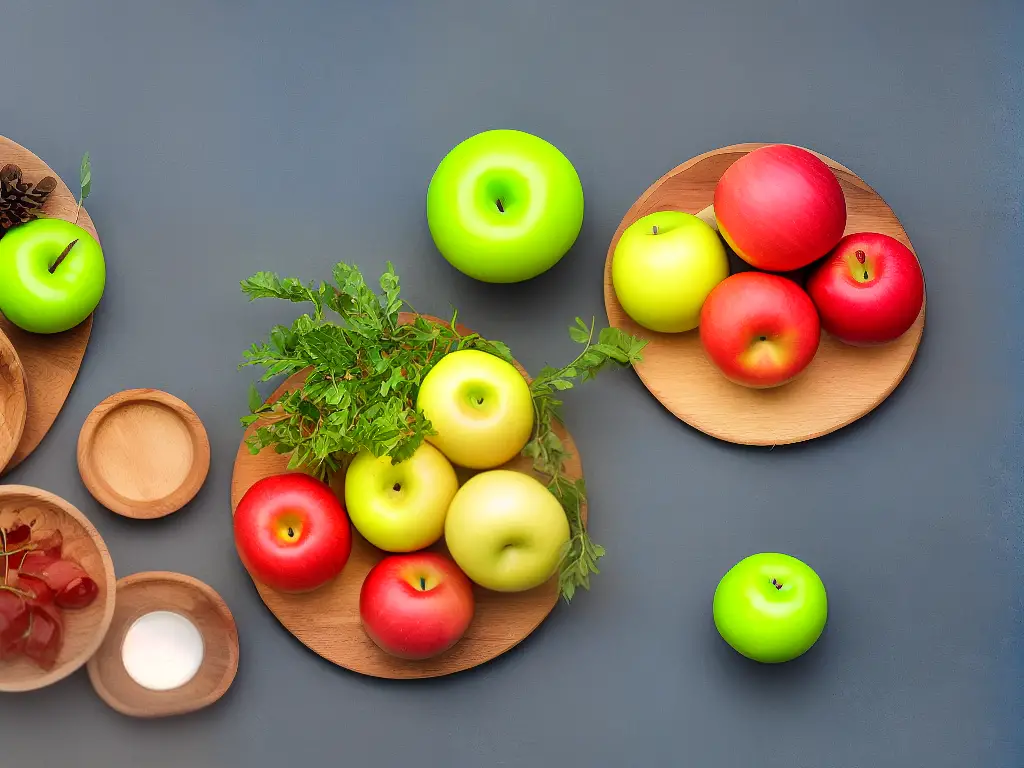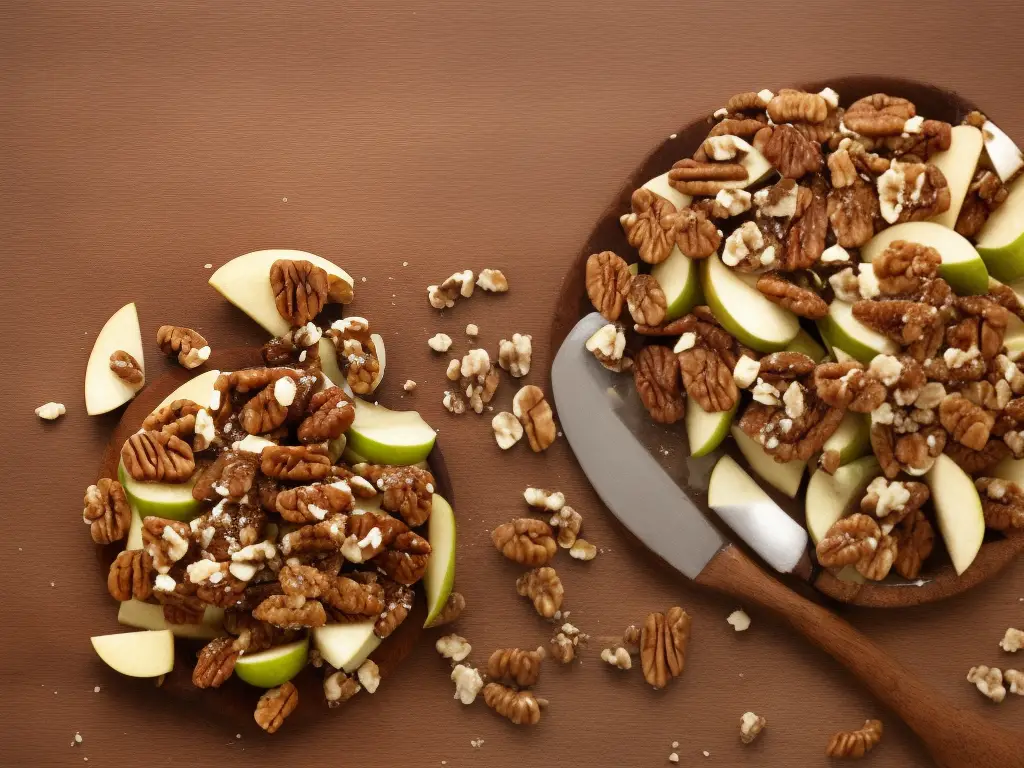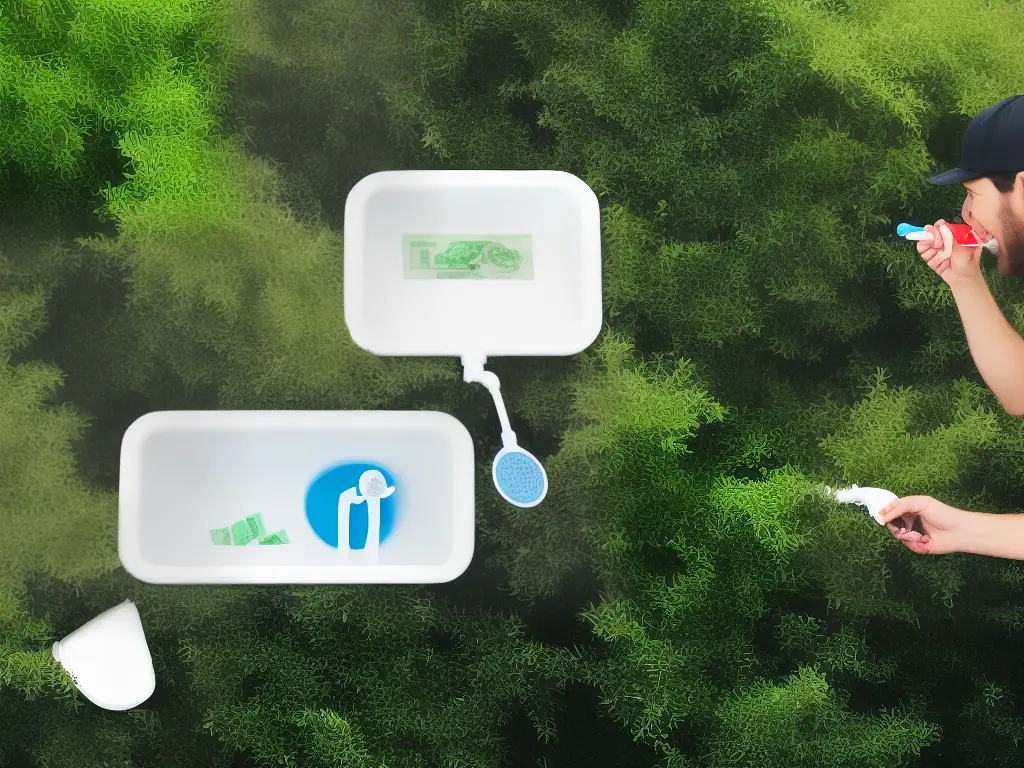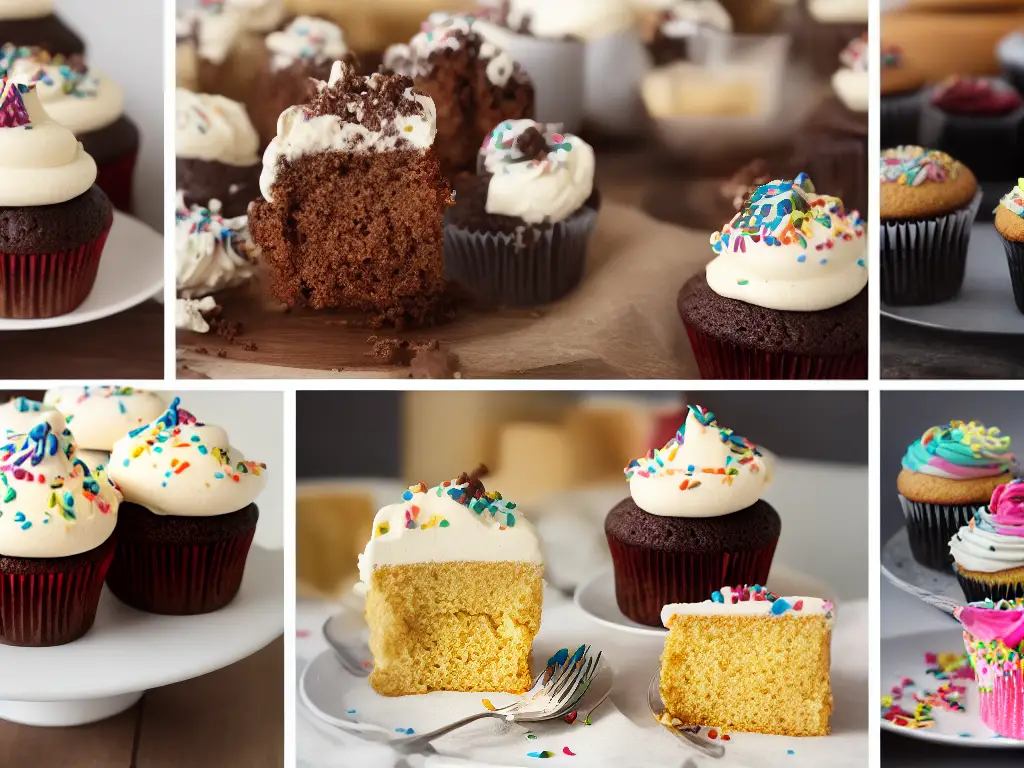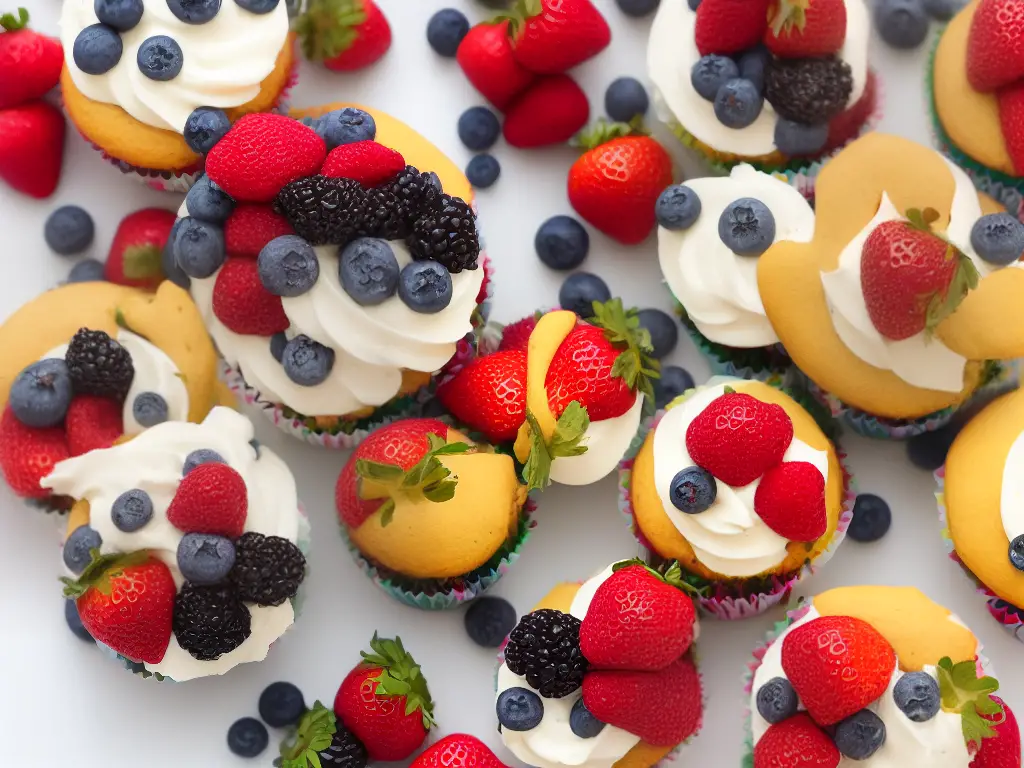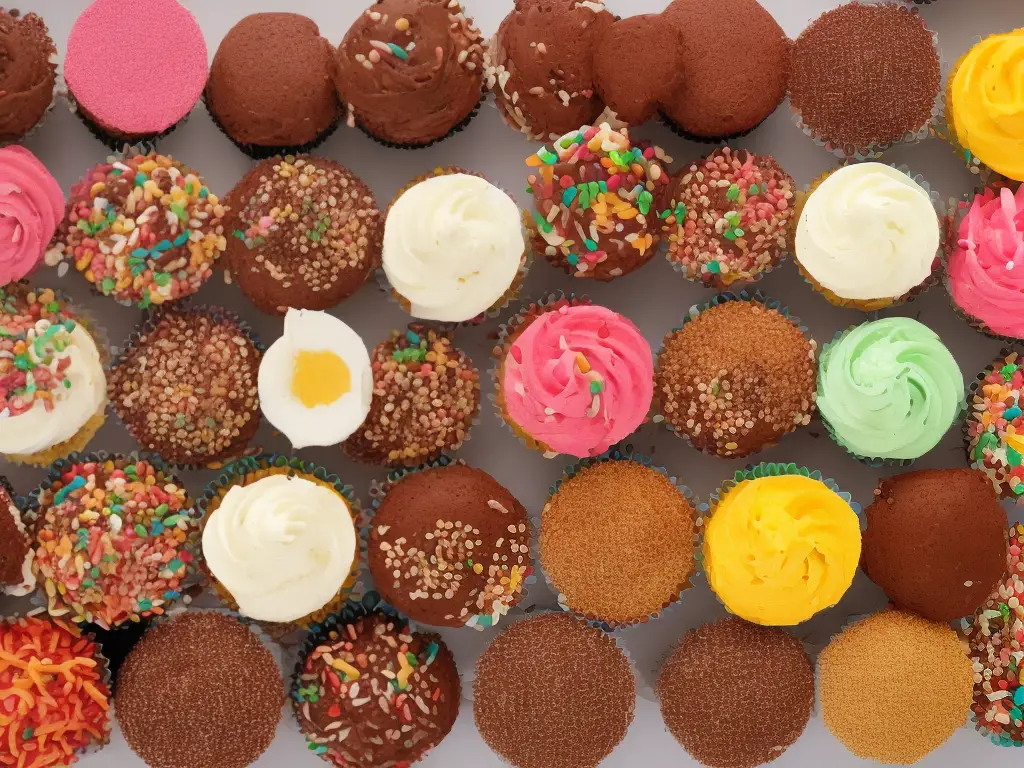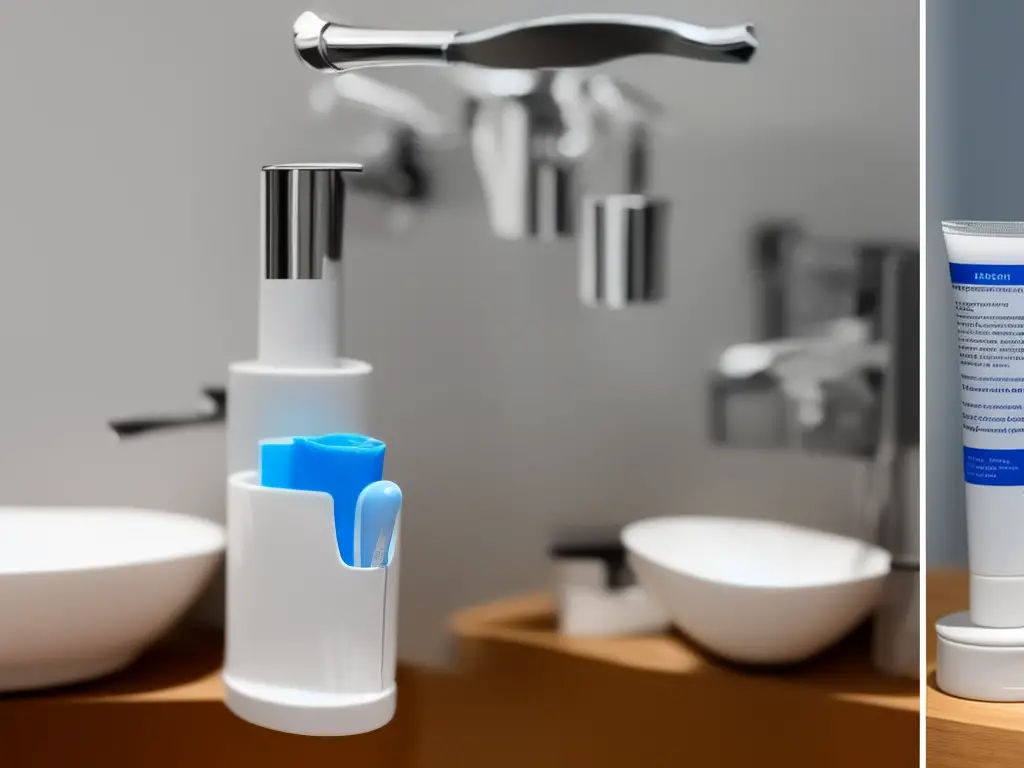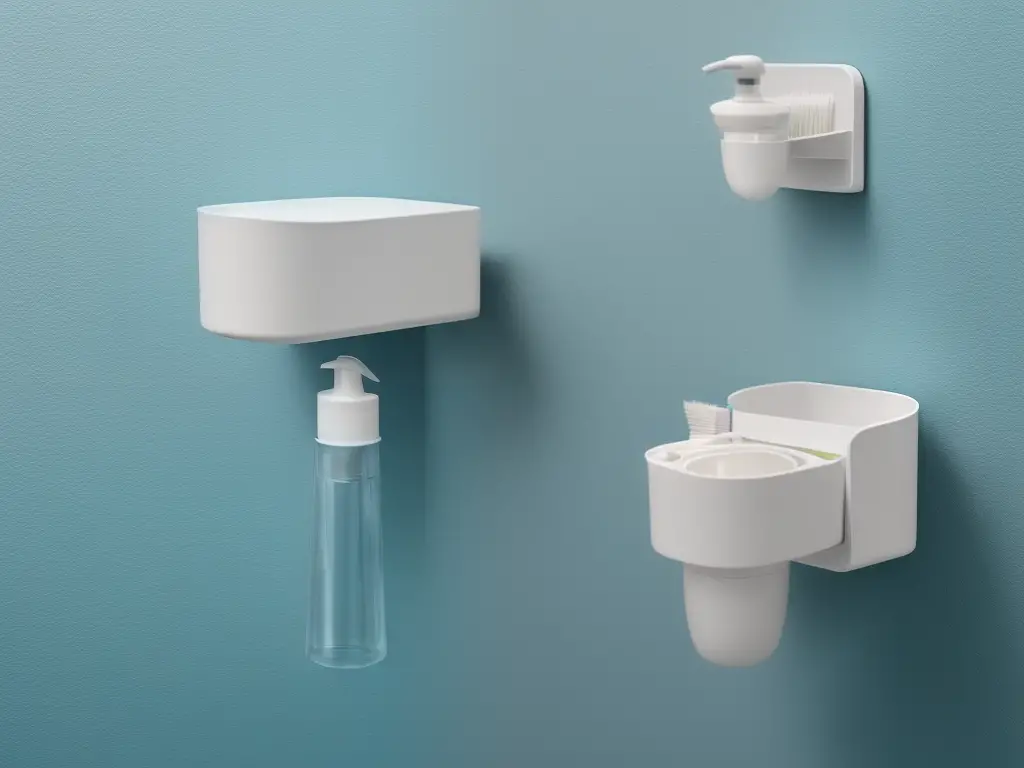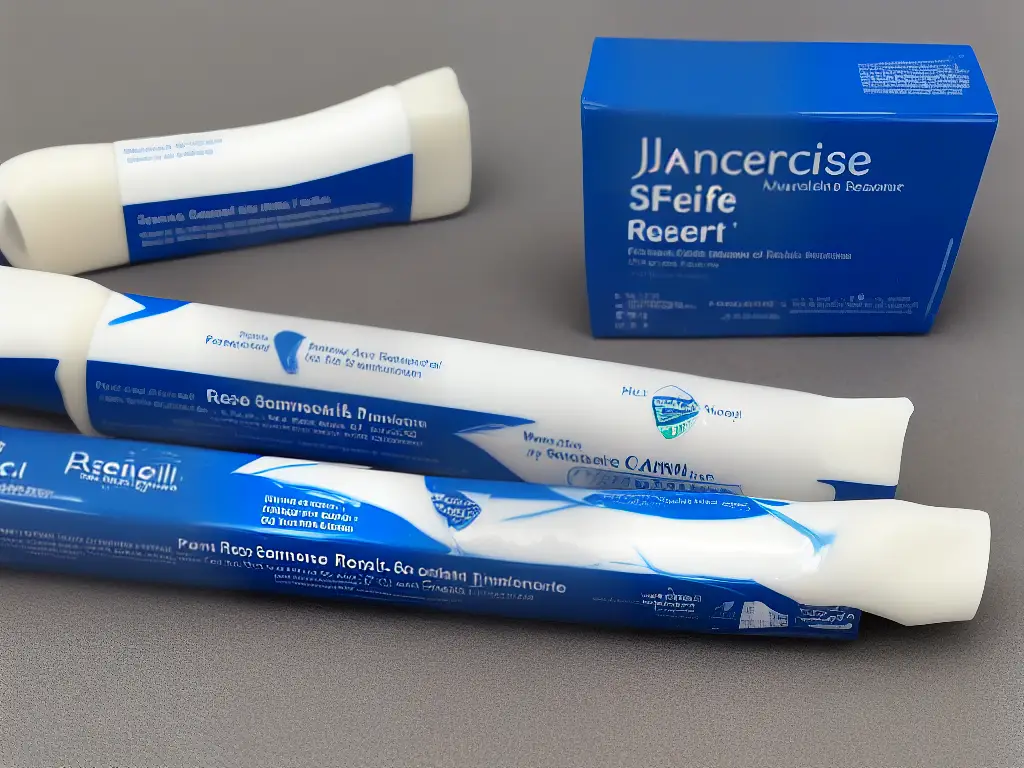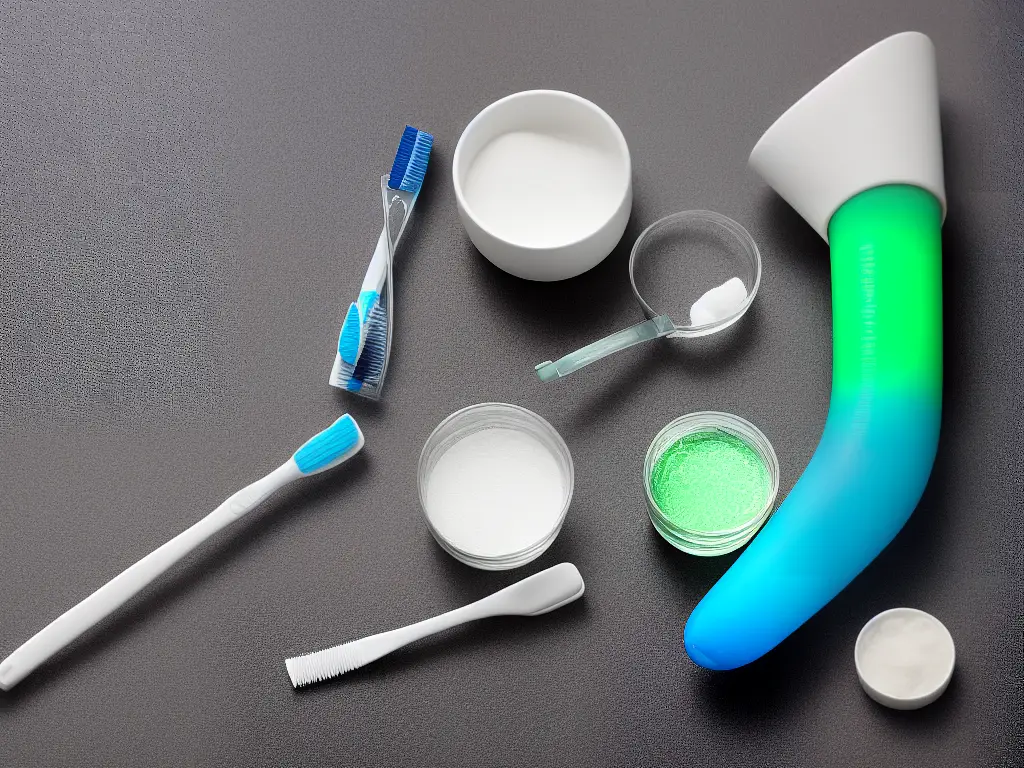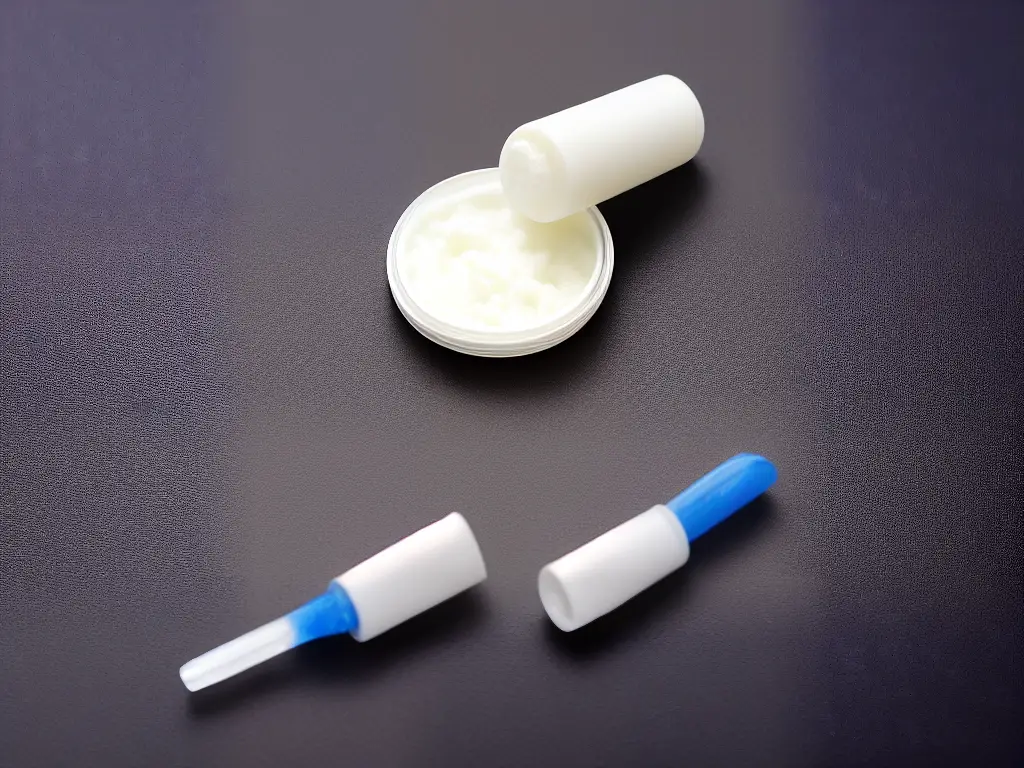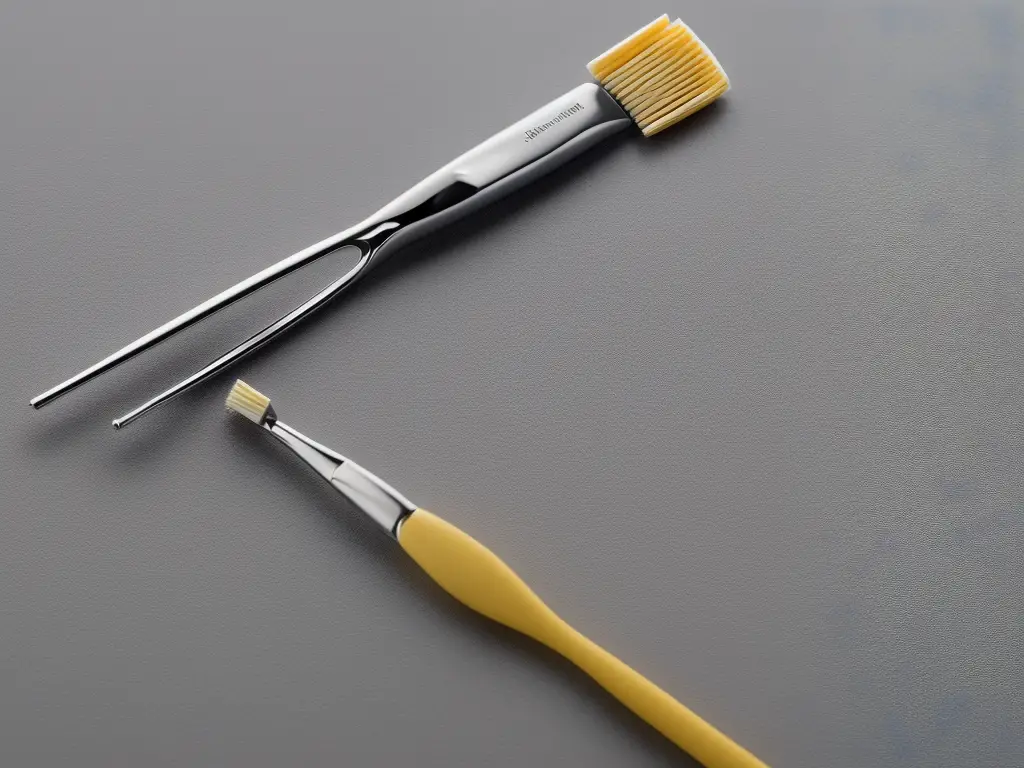Chocolate chip cookies have long been a beloved treat for people around the world. With their delightful blend of flavors and textures, they manage to satisfy many a sweet tooth and evoke warm memories of home-cooked goodness. In this exploration of the world of chocolate chip cookies, we’ll dive into their fascinating history, the roles of key ingredients, the delicious variations and add-ins available, and even some popular recipes and baking tips. Furthermore, we will also discuss best practices for storing and freezing these scrumptious morsels, along with creative serving ideas that are sure to impress.
History of Chocolate Chip Cookies
The history of the chocolate chip cookie, an iconic American treat, dates back to the 1930s when a woman named Ruth Wakefield invented the now-famous cookie recipe. Ruth, a trained dietitian and food lecturer, and her husband, Kenneth, owned and operated the Toll House Inn in Whitman, Massachusetts, a popular restaurant that served home-cooked-style meals.
To provide her patrons with a fresh and delicious dessert option, Ruth decided to create a new type of cookie that incorporated semi-sweet chocolate morsels into a butter-cookie dough.
As the story goes, Ruth intended to create a chocolate-flavored cookie, but instead, found that the chocolate morsels she added did not fully melt, resulting in the distinct chunks of chocolate nestled within the dough that we love today. Although there is some debate over whether the inclusion of chocolate morsels was truly accidental, one thing is certain—the chocolate chip cookie’s popularity took off quickly. In fact, the delicious treat became a household name across the United States, especially after the recipe was featured in a 1938 edition of Marjorie Husted’s radio show “Famous Foods from Famous Eating Places.”
The original Toll House Cookie recipe called for semi-sweet chocolate, which led to a partnership between Ruth Wakefield and the chocolate manufacturer Nestlé. This collaboration ensured that Ruth’s Toll House Cookies would use Nestlé’s Semi-Sweet Chocolate Morsels, and the recipe famously appeared on the packaging of Nestlé’s chocolate morsel bags. Nestlé went on to trademark the term “Toll House” as well, ensuring a strong connection between their product and the delectable cookie.
Throughout the years, the chocolate chip cookie has evolved as many bakers have put their unique spin on the classic, beloved recipe. Some variations include the sizable soft-baked cookies to the more delicate, crispy versions, while others introduced wholesome ingredients, like oats or nuts, to the mix. The humble chocolate chip has inspired countless confections, including cookie cakes, ice cream sandwiches, and cookie dough-filled treats. The chocolate chip cookie’s enduring popularity even led to it being designated as the official state cookie of both Massachusetts and Pennsylvania in the United States.
Chocolate chip cookies hold a special place in American culture as a beloved comfort food and classic dessert. Their nostalgic appeal, stemming from their ubiquity during childhood, makes them a much-loved treat among generations. The enduring popularity of these cookies can also be attributed to their accessibility, versatility, and ease of baking, making them a favored recipe among both home bakers and professionals. With countless variations now available, the legacy of the chocolate chip cookie promises to persist, continuing to bring delight to people around the globe with every scrumptious bite.
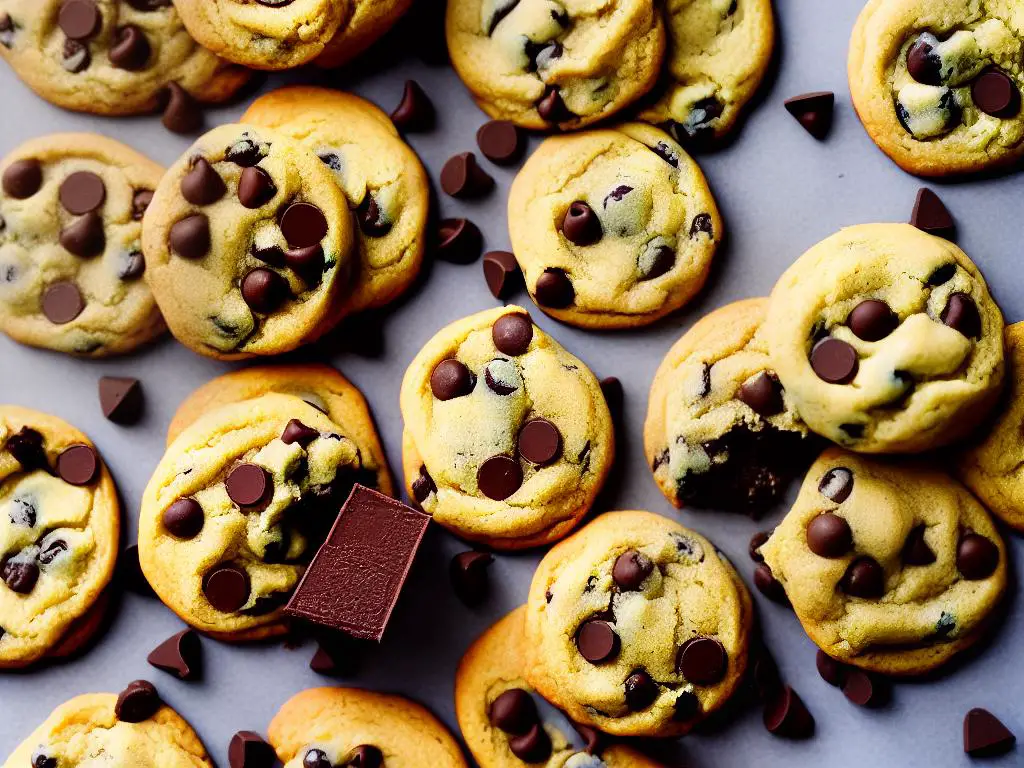
Ingredients and Their Roles
Central to the success of the ubiquitous chocolate chip cookie is one key ingredient: flour. Acting as the structural backbone of the cookie, most recipes call for all-purpose flour due to its medium protein content, which allows for a soft and chewy texture. The quantity of protein in the chosen flour plays a pivotal role in determining the development of gluten, which is essential for achieving the desired texture in the final product. However, several alternative flours are also available for use in cookie recipes, such as cake flour for a more delicate consistency, or bread flour for an even chewier delight. The type of flour selected directly impacts the structure and texture of the resulting chocolate chip cookie.
Another important ingredient in chocolate chip cookies is sugar. Sugar not only adds sweetness to the cookies, but also affects the texture, browning, and spread of the cookies. Two common types of sugar used in these recipes are granulated sugar and brown sugar. Granulated sugar promotes a crispier texture while brown sugar, containing molasses, contributes to a more moist and chewy cookie with a slightly caramel flavor. Often, a combination of these sugars is used in a recipe to achieve the desired balance of sweetness and texture.Fat, typically in the form of butter, is another crucial ingredient in chocolate chip cookies that influences the texture and flavor of the cookies. Butter imparts a rich and buttery taste, while also providing moisture and contributing to the cookie’s spread. Softened or melted butter facilitates the creaming process, which incorporates air into the dough and thus, creates a fluffier and tender end product. Some bakers prefer using shortening or oils, which can render a slightly crumblier or denser cookie, respectively. However, these alternatives may compromise the classic flavor profile of a chocolate chip cookie.Eggs are another essential ingredient in chocolate chip cookies, serving as a binding agent and providing moisture. Eggs also contribute to the structure and leavening of the cookies, as the proteins in the eggs coagulate during baking. Some recipes may call for just the egg yolks to increase the richness and moisture content of the cookies, while those that utilize only egg whites yield a drier and more crumbly texture. It is crucial to adhere to the recipe’s recommended number and ratio of egg parts to ensure the desired outcome.Leavening agents, such as baking soda and baking powder, play a significant role in the texture and rise of chocolate chip cookies. Baking soda, a base, reacts with acidic components like brown sugar or chocolate in the dough, producing carbon dioxide and causing the cookies to rise and spread. In contrast, baking powder, which contains both acidic and basic components, provides an extra lift without dramatically changing the spread of the cookies. The choice of leavening agent, or a combination of both, influences the final height and spread of the chocolate chip cookies, resulting in a variety of textures across different recipes.

Variations and Add-Ins
Chocolate chip cookies, an American classic, are adored for their delightful taste and adaptability. Various versions of this popular treat cater to different preferences.
One such variation is the oatmeal chocolate chip cookie, which combines the best of both worlds by incorporating rolled oats into the dough. These cookies have a chewier texture and slightly nutty taste, offering a perfect choice for those who enjoy the flavor of oatmeal cookies as well as the sweetness of chocolate chips.
The double chocolate chip cookie is another scrumptious twist on the original recipe.
By incorporating cocoa powder or melted chocolate into the dough, these cookies have a rich, chocolatey flavor that truly lives up to its name.
For an extra layer of indulgence, some bakers also opt to use white chocolate chips or even a combination of semisweet, milk, and white chocolate chips, offering a delightful contrast of flavors.
Another way to customize chocolate chip cookies is by adding various nuts, such as walnuts, pecans, or almonds.
Nuts not only contribute their unique flavors to the cookies, but they also impart a pleasing crunchy texture.
Depending on personal preference, nuts can be added whole, chopped, or even ground into a nut butter that is then swirled into the dough for a more subtle taste.
In addition to nuts, there are several popular candy add-ins that can kick chocolate chip cookies up a notch.
For example, incorporating M&Ms, peanut butter chips, or even crushed candy bars such as Snickers or Heath bars can add a fun and unexpected element to these classic treats.
These candy additions create an innovative flavor profile while still maintaining a level of comfort and familiarity that consumers love about chocolate chip cookies.
Lastly, for those seeking a unique flavor combination, incorporating unconventional ingredients such as dried fruits, coconut flakes, or even spices like cinnamon or nutmeg can result in a truly memorable chocolate chip cookie experience.
As tastes evolve and palates expand, experimenting with new flavors and textures can yield exciting and delicious results.
With so many different ways to make chocolate chip cookies your own, the possibilities are truly endless, ensuring that this ubiquitous treat will continue to be a beloved favorite for years to come.
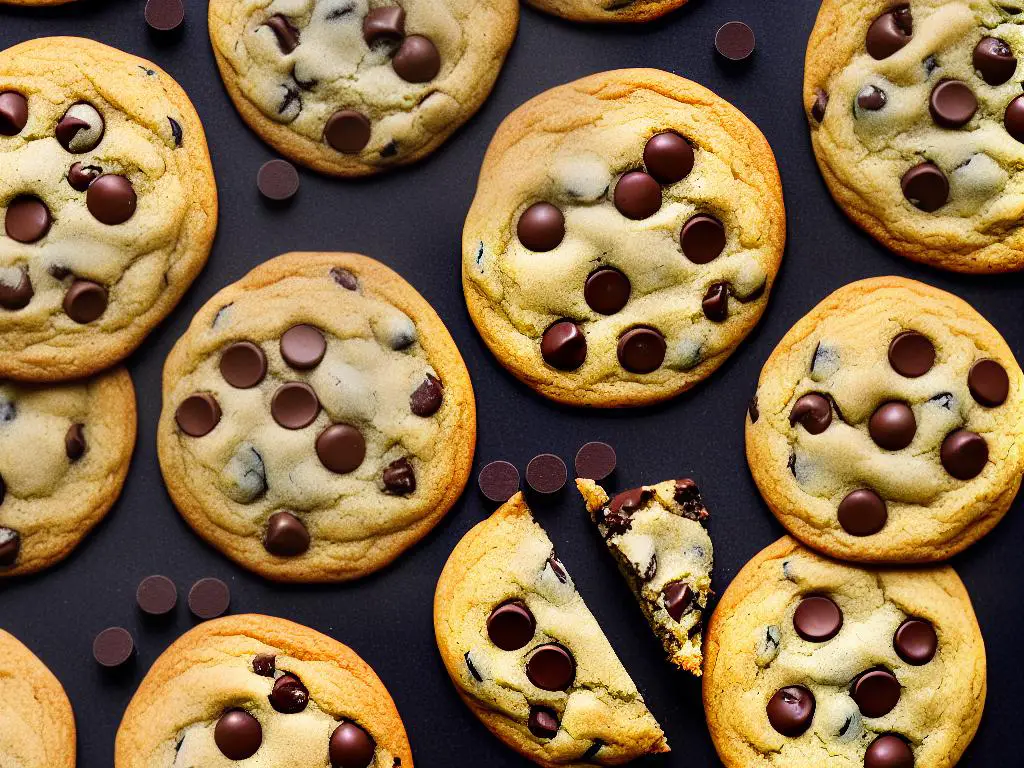
Popular Recipes and Baking Tips
Among the countless variations, one of the most popular chocolate chip cookie recipes is the original ‘Toll House Chocolate Chip Cookies’ recipe, created in the 1930s by Ruth Wakefield. These cookies include the classic ingredients: butter, sugar, brown sugar, eggs, vanilla extract, baking soda, salt, all-purpose flour, and, of course, chocolate chips. Various adaptations of this original recipe have since emerged, including several with added ingredients such as oats, nuts or flavored chips to create a unique and delicious twist on the classic cookie, further proving that the possibilities for inventive chocolate chip cookie creations are truly limitless.
Another famous chocolate chip cookie recipe is the ‘New York Times Chocolate Chip Cookie’, an elevated version of the traditional chocolate chip cookie. This recipe, created by Jacques Torres, requires specific ingredients such as cake flour, bread flour, and two types of chocolate discs – bittersweet and dark chocolate. The dough should be chilled for a minimum of 24 hours and portioned into larger cookie sizes. The result is a huge, soft, gooey cookie with a slightly crispy exterior and a rich chocolate flavor.In achieving the perfect chocolate chip cookie texture and flavor, several baking tips can be employed. Firstly, consider using high-quality chocolate chips or discs, which will have a significant impact on the overall taste of the finished product. When it comes to mixing the dough, avoid over-mixing, as it can result in a tough and flat cookie. Instead, mix the dough until just combined, ensuring that the dry and wet ingredients are evenly distributed.Chilling the dough is another essential step in achieving the perfect chocolate chip cookie. Chilling the dough allows the flavors to develop, resulting in a more complex and delicious cookie. Additionally, chilled dough is easier to handle and shape, reducing the risk of over-spreading while baking. It’s recommended to chill the dough for a minimum of one hour but preferably overnight.
Baking temperature and time are crucial components of chocolate chip cookie success. Preheating the oven to the correct temperature, usually around 350 degrees Fahrenheit, ensures that the cookies begin baking as soon as they hit the oven. Keep an eye on the cookies as they bake, as oven temperatures can vary. Chocolate chip cookies typically take around 8-12 minutes to bake. They should have a slightly golden-brown exterior, while maintaining a soft and chewy center. Lastly, remember to always cool the cookies on a wire rack to prevent them from becoming overly soft or soggy.

Storing and Freezing Cookies
Once your cookies have cooled, it’s essential to store them properly in order to retain their freshness and taste. One of the best ways to maintain their flavor is to place the cookies in a tightly sealed, airtight container. It is also important to keep the container at room temperature, away from direct sunlight, and any heat source. By doing so, you can ensure that the cookies remain moist, chewy, and delicious for up to a week.
When it comes to packing cookies for transport, taking care to prevent breakage and maintain freshness is key. The first step is to place a sheet of wax or parchment paper at the bottom of a sturdy container. Then, place a single layer of cookies on the paper, making sure they do not touch one another. If you need to stack multiple layers of cookies, make sure to place a sheet of wax or parchment paper between each layer to prevent them from sticking together. Secure the container with a tight-fitting lid to protect the cookies and prevent them from becoming stale.
Freezing cookies is an excellent method to prolong the shelf life of your homemade chocolate chip cookies. To freeze baked cookies, simply cool them completely and then wrap each cookie individually with plastic wrap. You can also place them in a zip-top freezer bag, making sure to remove any excess air before sealing the bag. This will help to prevent freezer burn and maintain the overall freshness of the cookies. Baked cookies can be stored in the freezer for up to three months.
Another great benefit of freezing chocolate chip cookies is that you can also freeze the dough for later use. To do this, simply portion your dough into individual cookie-sized balls and place them on a parchment-lined baking sheet. Allow the dough balls to freeze for at least an hour, and then transfer them to a zip-top freezer bag, again removing any excess air before sealing. This method allows for convenient baking in the future, as you can place the frozen dough directly onto a prepared baking sheet and bake as usual, adding a few extra minutes to the baking time. Frozen cookie dough can be stored for up to three months.
Discovering the world of chocolate chip cookies can be a delightful journey, complete with various techniques for maintaining freshness, taste, and creative serving ideas. To ensure you can enjoy and share your homemade cookies whenever the craving strikes, it’s important to follow proper storage and freezing techniques. Rest assured that your freshly baked chocolate chip cookies will be perfectly preserved for future enjoyment when these best practices are implemented.
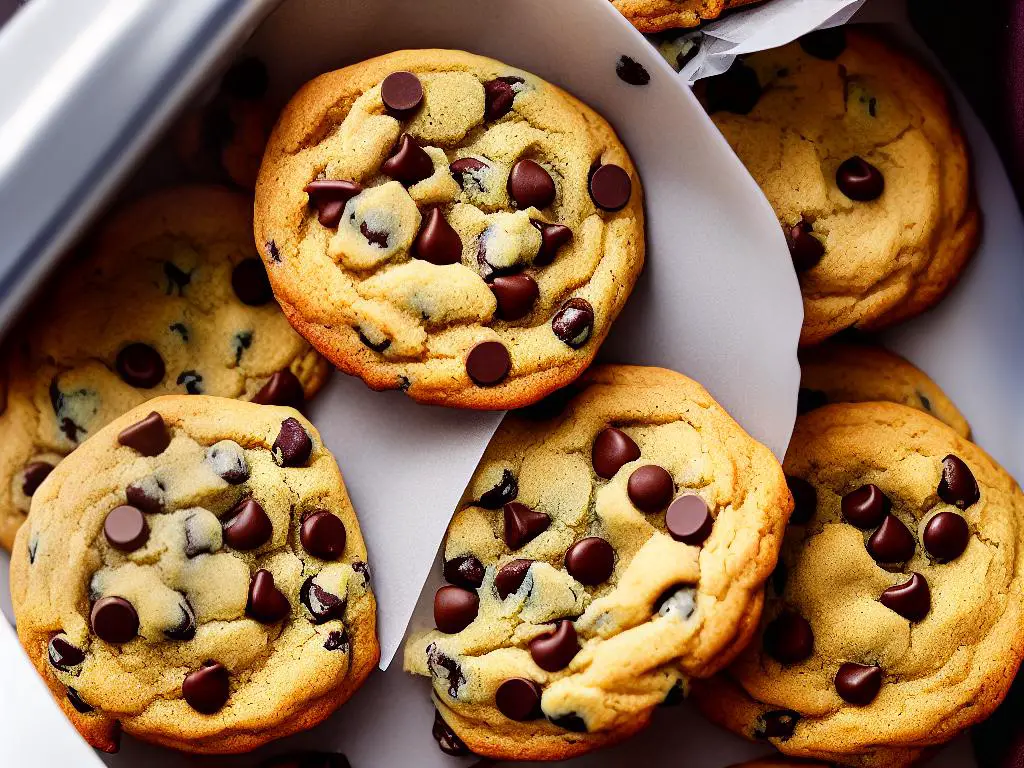
Fun and Creative Serving Ideas
One innovative and exciting way to serve chocolate chip cookies is by transforming them into delightful cookie cakes. To create a chocolate chip cookie cake, simply prepare your favorite cookie dough recipe and, instead of shaping it into individual cookies, spread it evenly in a greased cake pan. You can even create multiple layers, adding frosting or whipped cream between each layer for extra indulgence. Once baked and cooled, decorate the top with icing or powdered sugar for a visually appealing and delectable treat that is perfect for birthdays or special occasions.
Another creative approach to serving chocolate chip cookies is to craft scrumptious ice cream sandwiches. Start by baking your cookies to your desired level of crispiness, then allow them to completely cool. Once cooled, pair the cookies in similar sizes and shape. Choose your favorite ice cream flavor (vanilla and chocolate work especially well) and place a scoop between two cookies, gently pressing them together to create the perfect ice cream sandwich. Roll the edges in extra chocolate chips, sprinkles, or nuts for added texture and visual appeal. Wrap each sandwich in plastic wrap and freeze briefly to set before serving.If you’re looking to create a mouthwatering dessert for a party or gathering, consider making chocolate chip cookie bars. This simple and crowd-pleasing idea starts with baking a large batch of chocolate chip cookie dough in a sheet pan or large baking dish. Once cooled, cut the giant cookie into smaller bars, which can be served as is, or dressed up with various toppings such as caramel or chocolate drizzle, whipped cream, and fresh fruit. Cookie bars can also be layered with different types of dough, like peanut butter or oatmeal, for a fun twist on a classic dessert.In addition to cookie cakes, ice cream sandwiches, and cookie bars, chocolate chip cookies can also be used to concoct indulgent dessert parfaits. To assemble a chocolate chip cookie parfait, crumble your freshly baked cookies and layer them in a glass with your favorite pudding or mousse. Add in layers of whipped cream, chocolate chips, or fruit for added flavor and texture. These handheld delights make for a stunning dessert presentation that will have your guests eagerly reaching for seconds.Finally, if you’re seeking a clever way to serve chocolate chip cookies to a crowd, try constructing an edible cookie bowl. Use a standard muffin tin and place small balls of chocolate chip cookie dough over the bottom of each cup, shaping it to fit the curves of the tin. Bake as directed, and once cooled, carefully remove from the tin to create miniature cookie bowls. Fill these edible cups with ice cream, fruit, whipped cream, or another favorite treat for a creative and whimsical dessert offering that is sure to delight.
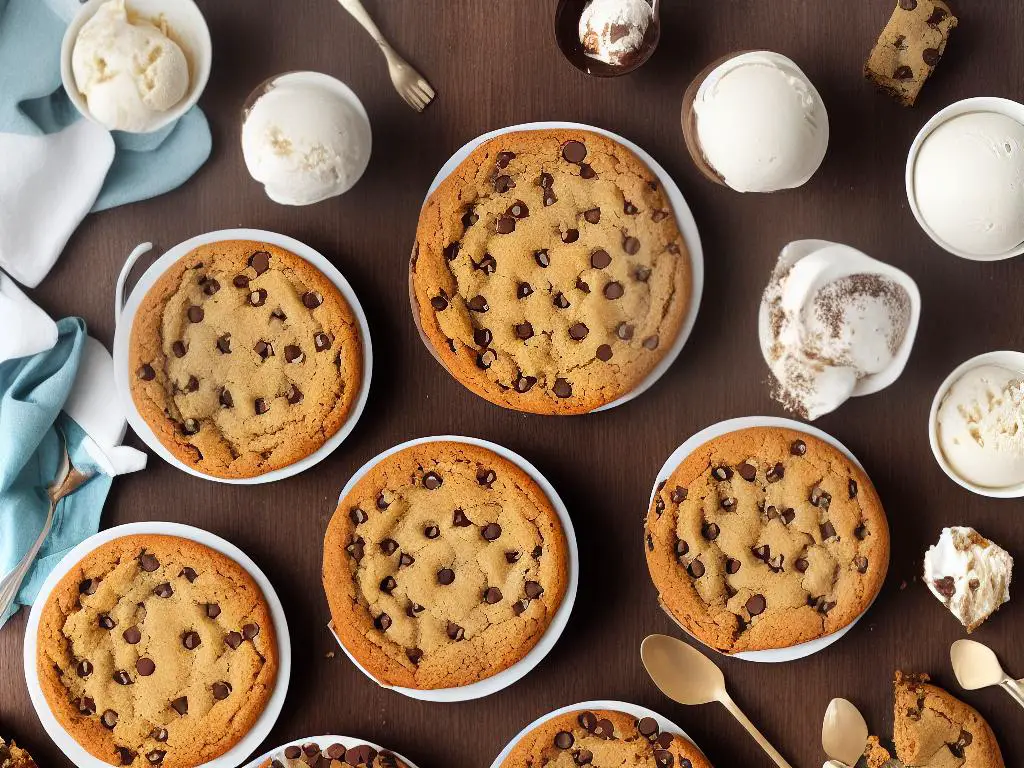
As our journey through the world of chocolate chip cookies comes to an end, we can truly appreciate the depth and diversity of this classic treat. From their humble beginnings and the importance of each ingredient, to the countless variations and creative serving options, it is clear that chocolate chip cookies hold a special place in the hearts of many. The next time you indulge in a warm, gooey cookie, take a moment to savor the flavors and textures that have captivated the world for decades, and perhaps even gain inspiration to create your own chocolate chip cookie masterpiece.

